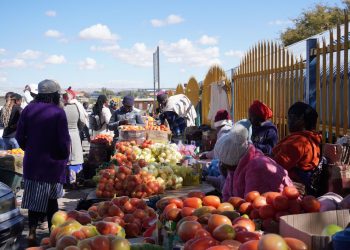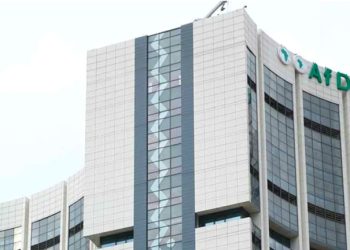
The Electricity Control Board of Namibia’s Chief Executive Officer Robert Kahimise says the country is safe from load-shedding for the next 12 months, calming fears of a possibility of power cuts as a result of South Africa battling with an energy deficit.Â
Namibia is a net importer of electricity from South Africa with at least 40%, in order to meet its day-to-day power needs. However, South Africa has been facing a power crisis with increased load-shedding as a result of constant breaks of its aging power generation infrastructure at major plants.
“According to available information and resources, Namibia is safe for the next 12 months from any load-shedding, but we cannot rule out the fact that it can’t happen. For now, the likelihood is mitigated and under control, including our projected imports and supplies to meet our local demand,” Kahimise said.Â
Adding to that, the government through the Ministry of Mines and Energy has set up a technical committee to monitor and assess the situation and see to it that there is a constant and reliable supply of electricity.
“It is important to note that the Southern African region is experiencing an electricity shortage which puts pressure on supply and tariffs. This situation will prevail until new generation capacity has been built,” he said.
Kahimise made these remarks at the announcement of NamPower’s bulk tariff which was adjusted to N$1.98 from N$1.82. NamPower has requested a 16.87% increase but was only accorded 8.97%.
Namibia has a power demand of approximately 700 megawatts, compared to South Africa whose demand is at 60,000MW.
For the period 2023/2024, it is forecasted that the national demand will be met by 59% by regional imports and 41% by local generation. The Ruacana Hydro-Power Plant is the main source of our local generation. However, it has performed below average over the years, due to the low water flow of the Kunene River, says the control board’s CEO.
“Electricity that was not generated at Ruacana as anticipated during the previous period was replaced by imports at a higher cost, which leads to a higher tariff under-recovery,” he stated.
Due to reduced rainfall at Ruacana which has resulted in less power production, Kahimise said, the Ministry of Mines and Energy and relevant government stakeholders will soon engage Angolan authorities to discuss the matter of low water flow of the Kunene River to ensure that Ruacana Hydro-Power Plant is optimised and effectively used to the benefit of all electricity consumers in Namibia.
“Compared to other generation sources, electricity is generated relatively cheap at Ruacana. Therefore, less generation at Ruacana means increased generation of power from expensive alternatives or imports at higher costs,” he reasoned.Â
NamPower, as the national power utility, is working around the clock to ensure that the country reduces its dependence and becomes self-reliant, by implementing several electricity generation projects. Among them is Anixas II 50MW, expected commercial operation date is April 2024 and Khan Solar PV-20MW, anticipated to become operational in the third quarter of 2024.
Currently, NamPower power stations, Anixas diesel produces 22MV, Ruacana Hydro 330MW, Van Eck Coal 120MW, and Paratus Diesel 16MW.
So far, the control board has issued 73 electricity Generation licences, of which 50 are operational, three are under construction and 20 are still under development.
“We hope that those licensees that have not yet commissioned their plants will do so soon and that they will have a positive impact on end-consumer prices,” said Kahimise.











![July '24 Retailer & Hyper [1] [2] - The Brief | Namibia's Leading Business & Financial News OK Foods leads in Year-on-Year basket cost reduction in July](https://content.thebrief24.com/wp-content/uploads/2024/08/04114349/July-24-Retailer-Hyper-1-2-120x86.jpg)